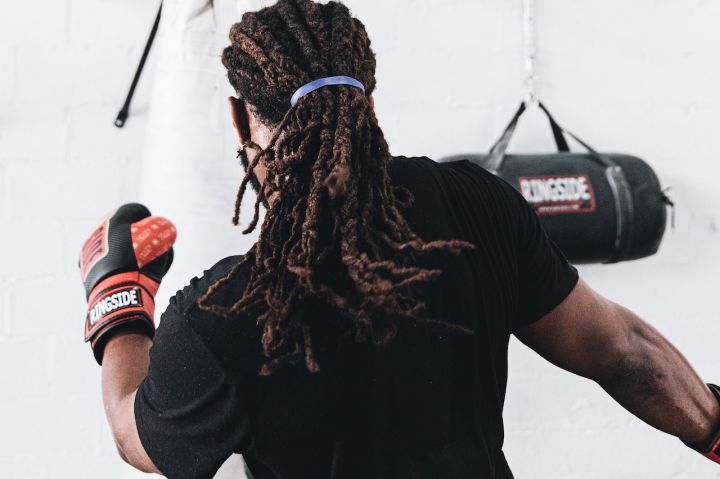the criterion for judging fit and unfit is the individual's proprioception of the movement. For example, the butterfly machine clamps the chest, some partners how to do it is difficult to focus, but some partners are able to switch back and forth in one training in the full, half, 3/4 range, comparable to do the bench press.
Of course, since we are passing on our experience, we must save a lot of newbie partners the time of figuring out how to feel it on their own. Today we introduce 8 movements that are perfect for newbies to get a feel for, and veteran drivers may also want to give them a try.

1、leg raises
every time i train my quads, i choose some leg lifts to do. Do the whole thing, whether it's 4-6 reps per set with heavy weights or 30 or more per set with light weights, this movement is very effective.
The best thing about leg lifts is that you can exhaust your thigh muscles without overworking your upper body.

variations: Just like the squat, try changing the position of your feet in different movements. Also, try doing this one leg at a time, squatting as deep as possible in each movement.
2. Seated chest fly
many gym goers think this is a finishing move and not really a muscle building move, but i disagree. Two important ways to tear up muscle fibres (plus better recovery) are through deep stretching and strong overhead contractions, and the seated chest flyer achieves both in every movement. Make sure the elbows are up and in line with the hands to maximise activation of the pecs.

movement variation: Turn the seat up or down to better stimulate the muscle fibres of the pectoralis major or upper pectoral muscles.
3. Huck squat
for me, the huck squat has a greater impact on the thighs than the barbell squat. The huck squat can be done with a lot of weight without worrying too much about the lower back. The huck squat will engage the gluteus maximus and hips a little less and allow the quads to be more directly stimulated. Even with a larger load, there is little stress on the neck and fewer safety hazards in squatting to a lower position.

movement variation: Change the position of the foot on the pedal, up or down, to slightly alter the muscle fibres collected. Use a foot wide or narrow stance to shift the training muscles from the inner thigh to the outer thigh. When you want to train the gluteus maximus more, try reverse squats.
4. Standing single leg curl
i love the way this movement feels for the hamstrings, because whether it's a lying or seated leg curl, the standing position feels completely different to them. In fact, it feels like a seated bicep bend in terms of contraction.

variation: Try standing on your feet instead of bending them, this will give the hamstrings a special sense of stimulation.
5. Seated straight arm pull down
not every gym has a straight arm pull-down machine, but they really should have to. There are very few movements that give such direct isolated stimulation to the upper latissimus dorsi and the greater circularis, and this really brings the upper back width to the armpit position. Seated straight arm pulldowns are a must for me to create a v-shape.

movement variations: You can raise or lower the seat slightly to get a different feel. But the movement must go from full extension to contraction.
6. Posterior deltoid flyes
generally speaking, this movement is the same apparatus used for the butterfly machine chest clamps, but in the opposite seated position. This is my favourite movement used to stimulate the deltoids and it helps to fill in the details of the upper back muscles. Even with larger weights, you can still get a great contraction in each movement.

movement variations: Raise or lower the seat to stimulate the posterior fascia from different angles. Alternatively, if you want to engage the middle obliques, then pull the elbows back as far as possible and squeeze the obliques.
7. Rope overhead arm curls
because the overhead arm flexion movement strongly stimulates the long head of the triceps (the largest muscle bundle of the triceps), i tend to use it in arm training. When using a rope, rather than a barbell or dumbbell, you not only get a good stretch, but also an equally strong overhead contraction.

movement variations: Do this with different bars, such as a "V-bar", a straight bar or a curved bar. Sometimes i even do this with one arm, holding only the end of the rope.
8. Rope preacher's bench bend or lever preacher's bench bend
i rarely do angled priest bench curls with dumbbells as it does not provide a great sense of contraction. However, with the rope apparatus there is resistance to pulling down at the top of the movement, which creates a more intense and effective contraction. I also like the sense of muscle control that this barbell bend provides, resulting in a complete contraction (which is the key to building muscle).

movement variation: With a wider or narrower grip on both hands, you can train the lateral or medial biceps and try to train with one arm, thus having better concentration and neural drive.

